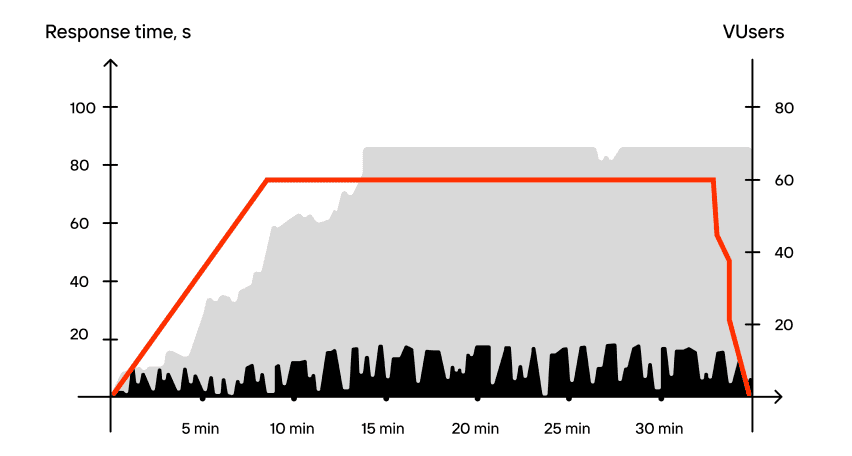Our client is a popular pizza delivery service. They have planned, developed and continued on improving their software solution that:
They have employed PFLB to test the system and to tune its performance.
PFLB Team Was about to Accomplish the Following Tasks:
How Have We Managed It?
The system contains several applications that take care of the following business processes: accepting customer orders through the web-interface and mobile apps; accepting restaurant branch orders from call-center employees and shift managers; accounting the quality and the speed of executing the order.
During testing most of the load was coming from the site or mobile app users and the cashiers that take orders. The secondary load sources emulated the system workflow and influenced the business processes: the tracker (it controls the order execution), TV-board in the pizzerias (it requests information from the system) and the information screens.
We’ve written test cases containing script and emulator run schedule, as well as scripts that emulated user actions, retrieved the amount of current operations, their intensity and the number of virtual users performing them, recorded the test duration.
We’ve used the hardware resource monitoring that was employed in the client’s system that consisted of grafana + influxDB solution + telegraf(windows)/ exporter(*nix).
Based on the test results we’ve analyzed the system load criteria for different load levels, including overcoming the maximal performance. As the analysis result we’ve listed the critical areas requiring monitoring on production and the factors that decrease performance: the lack of hardware or system resources, the software architecture limits. We’ve also selected the most resource-greedy and longest operations to optimize.
Which Challenges Has Our Team Faced during the Project?
Which Results Have We Achieved?
Related insights in case studies
From Hundreds to Thousands: Scaling MEFA Pathway Software for Mass Student Registration

FolderWave, Inc. is a leading digital services provider in the Massachusetts e-learning sector. It aids millions of students in researching and planning a job-oriented education. The company delivers IT solutions, platforms, and services in partnership with notable non-profit organizations like MEFA Pathway and College Board, which connect a vast network of colleges, schools, and universities […]
How Load Testing Helped Texans Survive Power Outages During a Storm

Background The largest electric distribution cooperative in Texas and the United States, Pedernales Electric Cooperative (PEC), had to test its new software systems, the Storm Center and the OR&S (Outage Reporting & Status), before the release to ensure their adequate performance under peak load. Challenge PEC had a strict release deadline and needed to test […]
Tynor Prepared the New Website for High Sales in Four Days

Tynor Orthotics is India’s largest manufacturer and exporter of orthopedic and fracture aids established in the 90s to deliver quality healthcare products. Committed to a significant expansion in the next three years, Tynor crafted a new e-commerce website focused on excellent customer experience to support this growth. To be confident at launch, the engineering team of Tynor decided to run pre-go-live stress testing for the website. The tight deadline felt challenging, the customer was relieved to hear we provide a quick load testing solution. Quick Load Testing solution includes a four-day load testing project performed by engineers of PFLB and a 1-month subscription to the innovative load testing PFLB platform.
Bank Increases Load Capacity by 450% to Deal with Business Growth

Our client's bank was absorbing other banks, and the number of individual clients was growing. The system was not ready for expansion or integration. The owners started to suspect bottlenecks when problems with paying salaries to corporate clients’ employees arose. As a result, in the next pay period, the load on the system increased dramatically, and the system got overloaded. People did not get their salaries in time, as the system crashed.
Be the first one to know
We’ll send you a monthly e-mail with all the useful insights that we will have found and analyzed
People love to read
Explore the most popular articles we’ve written so far